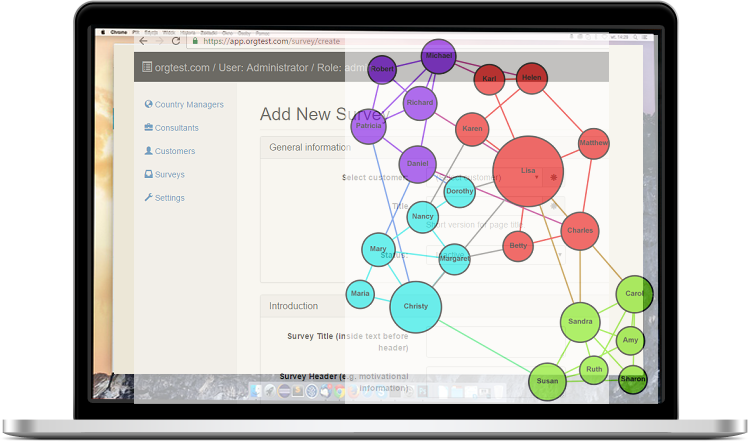METHODOLOGY
ORGTEST software leverages decades of research published in top journals by top researchers at top universties.
Krackhardt, D. and Hanson, J.R., 1993. Informal networks: The Company Behind the Chart. Harvard business review, 71(4), pp.104-111.
Burt, R.S., 1997. The contingent value of social capital. Administrative science quarterly, pp.339-365.
Borgatti, S.P. and Cross, R., 2003. A relational view of information seeking and learning in social networks. Management science, 49(4), pp.432-445.
Rank, O.N., Robins, G.L. and Pattison, P.E., 2010. Structural logic of intraorganizational networks. Organization Science, 21(3), pp.745-764.
Battilana, J. and Casciaro, T., 2013. The network secrets of great change agents. Harvard Business Review, 91(7), pp.62-68.
